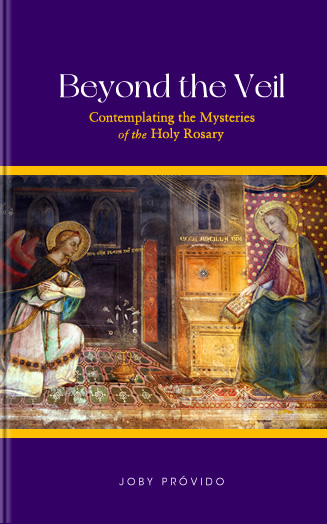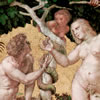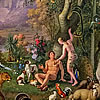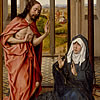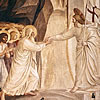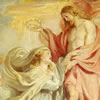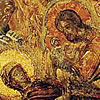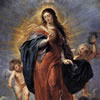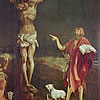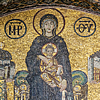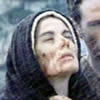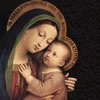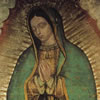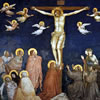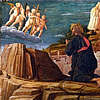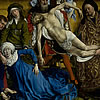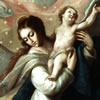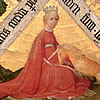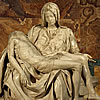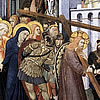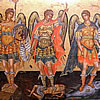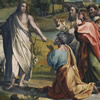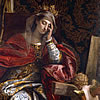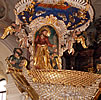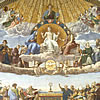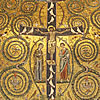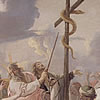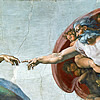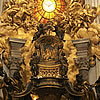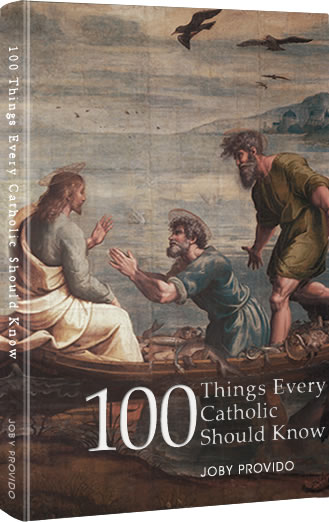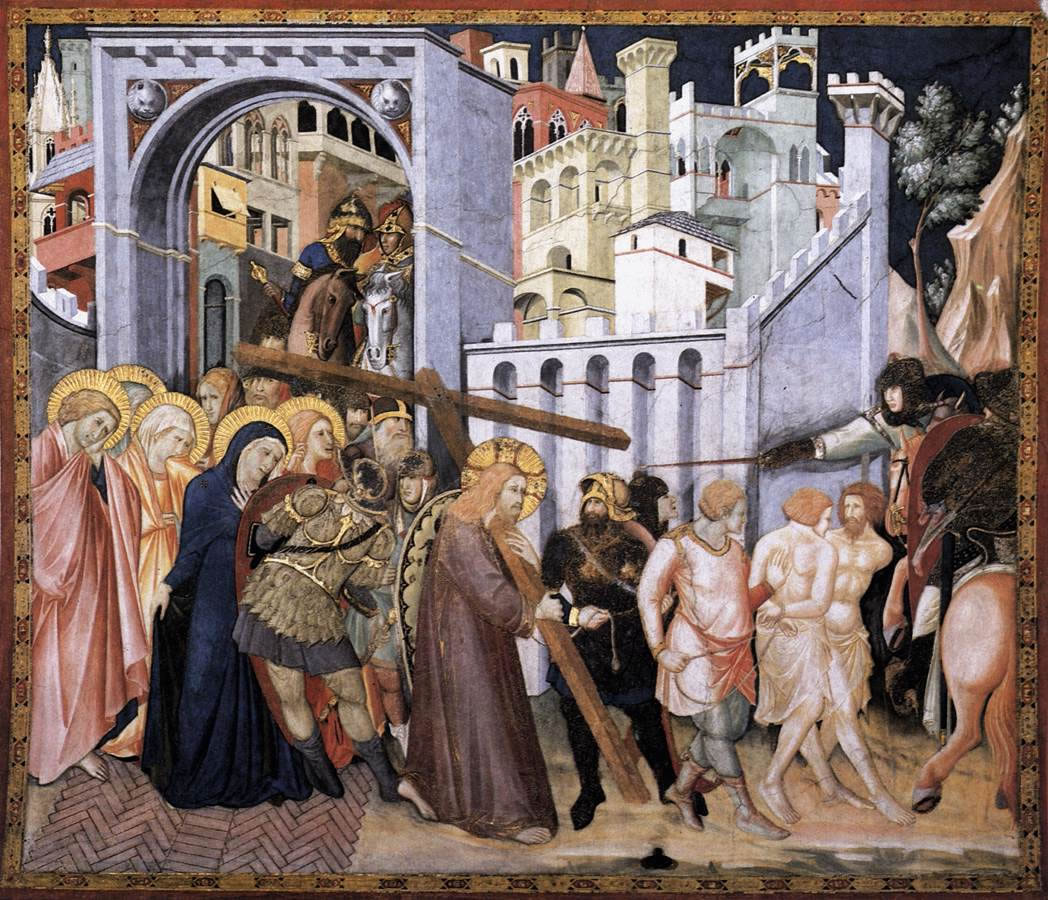

Road to Calvary
The painting depicts the early stages of the Way of the Cross where we meet Christ just leaving the gates of Jerusalem. The location of Christ’s death outside of the city is important because while the Passover lambs as well as the sacrificial oxen are bled inside Jerusalem, the scapegoat is made to die outside the city gates.
Both animal victims offered in the Temple, as well as the scapegoat, are types of Christ. Just as the animal victims needed to be bled to death, Christ was scourged first. On the Day of Atonement, the High Priest would lay his hands on a goat and symbolically load all the people’s sins onto the animal. They would then lead the animal outside the city where it would die – and the people’s sins would die with it. Christ dying on Calvary becomes the perfect scapegoat for all humankind.
Sacred Scriptures record women following Our Lord as he made his way to Calvary. We see them on the lower left depicted with halos on their heads. One prominent is made to be seen more distinctly than the other women, and that is Mary the mother of Jesus, who is the only one wearing blue. The color is not arbitrary; by that time in art, Mary had mostly been depicted wearing a blue mantle. It has to do with her mantle symbolizing the sky indicating that the entire earth is under her motherly mantle of love and protection.
In this depiction, however, we see a soldier using his shield to prevent her from touching, or even coming close to her son who holds his cross lovingly almost like an embrace. It is a touching moment when we zero in on Mary and her son. She must have not been able to sleep the entire night. The entire world must have slept the way Peter, James, and John kept falling asleep in Gethsemane. But, because her son was arrested and found guilty by the High Priest, she couldn’t fall asleep. What loving mother can sleep in these circumstances? She kept watch. It is as if the Book of Lamentations foresaw this night when we read, “She wept in the night: there was none to comfort her among all those who were dear to her.”
When Christ was scourged and then sentenced to die by crucifixion, she must have wanted her son to see her as he made his way to Calvary. When someone we love is sick or dying, we visit them wherever they are. Even if we don’t have the power to cure their sickness, we show our love, care, and encouragement. When they see us, their hearts smile even if their faces no longer can. So Our Lady wanted to do this; she wanted her son to see her so she could make his heart smile even for a short while.
Maybe with the help of St. John, they positioned themselves in a curve in the path where those walking on it would surely see the people at the bend. As Our Lord slowly made his way up, her heart must have surely been devastated to see him no longer looking like God. Her son looked like a trampled worm – all bruised, dirty, and bloodied; he did not look like God at all.
Saint Bridget said Mary loved her son more than any human could love someone else. This is because she cooperated with God’s grace so that her heart would be kindled by a thousand flames of love for her son. But we are hurt most by the one we love most. So when Mary saw her son in such a deplorable state, the thousand flames turned into a thousand swords that pierced her heart.
Any loving mother would want to spare their children from any suffering. What more of Mary who loves her son perfectly? But even if her son’s broken body prevents us from seeing him as God, she knew who he is. She trusted her son is God who is suffering for all men and women in the past, present, and future.
Eventually, their eyes met, and without the need to say anything, they understood each other just by reading each other’s eyes. Mary couldn’t take it anymore, she needed to touch him. She wanted to touch him. So she reached her hand out.
But we come to the fateful moment in this painting. Just as she is about to touch her son, a soldier used his shield to push her back. Instinctively, she withdrew her hand to her chest, but she kept her eyes on him. We can see her longing to at least give her son a momentary balm of a tender touch.
We see Christ walk past her. He doesn’t do a thing to help his mother. He doesn’t even look back. What kind of son does that to a mother he loves? But God’s ways are not our ways. In his divine wisdom, Our Lord had to resist with all his power to comfort his mother at this time. He had to see his mother in such sorrow to allow her the opportunity to join him and take part in this divine drama – for his mother was and had always been part of God’s plan for the salvation of the human race.
In a way, Our Lord had to break his mother’s heart even more so that it can still be made wider and bigger so that in the immensity of his love, there might be room in her heart for all of us who are going to be her children.
More contemplative scenes from the rosary in this book:
Beyond the Veil: Contemplating the Mysteries of the Holy Rosary


